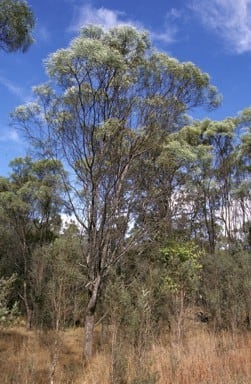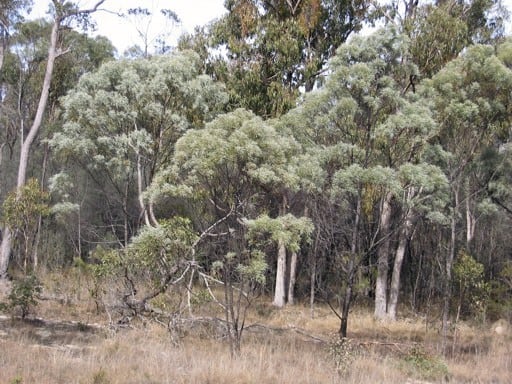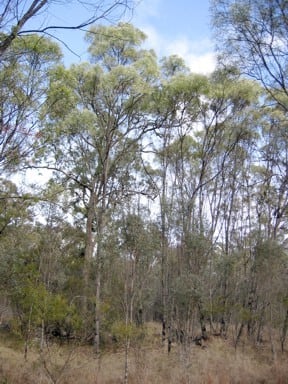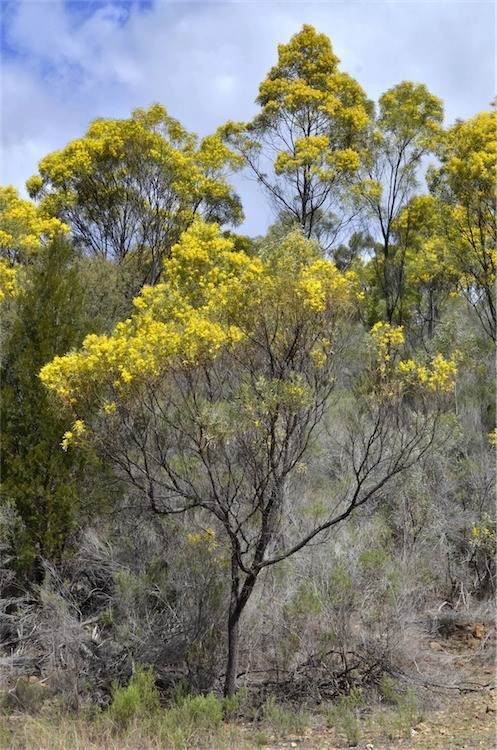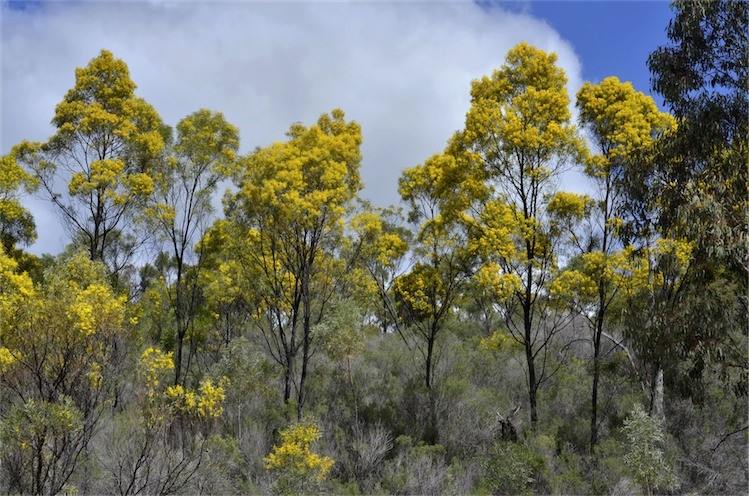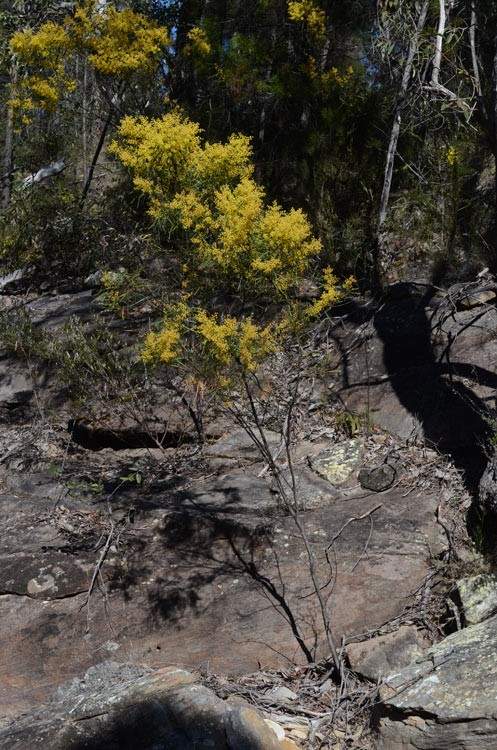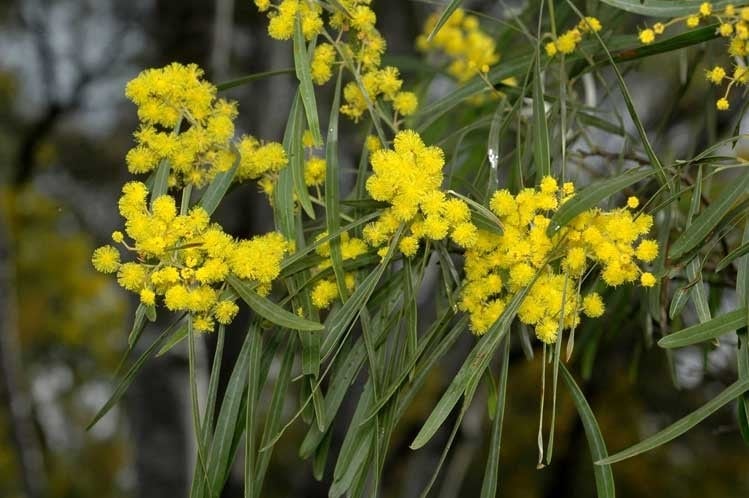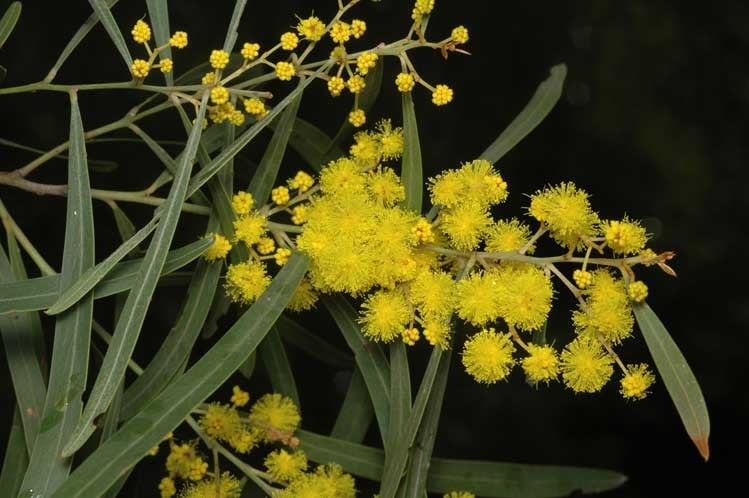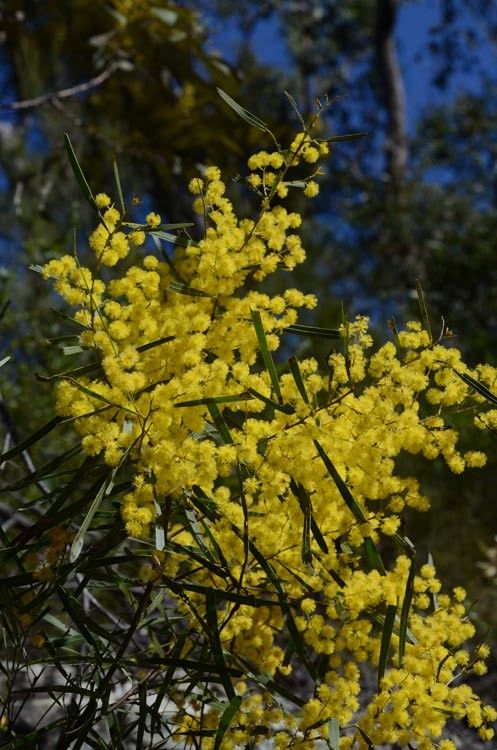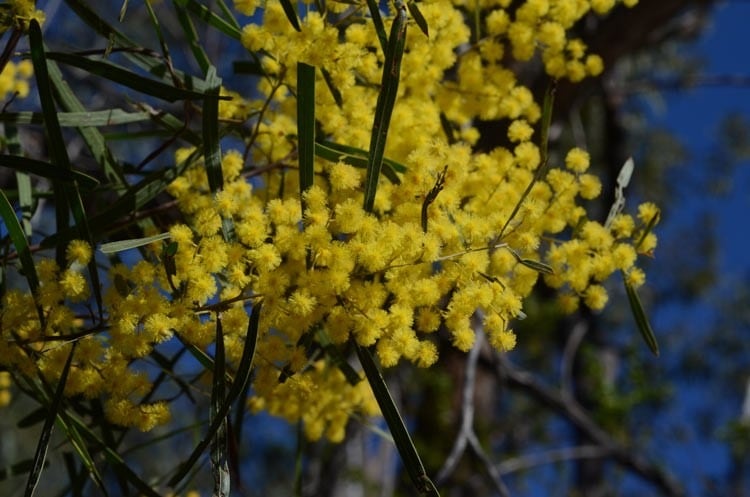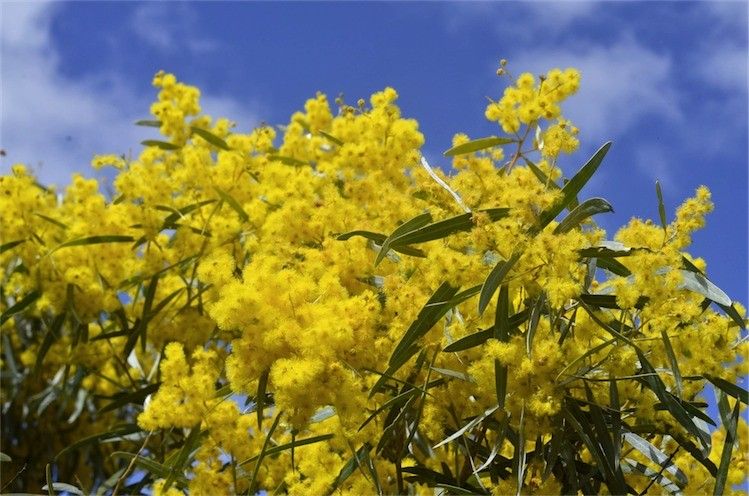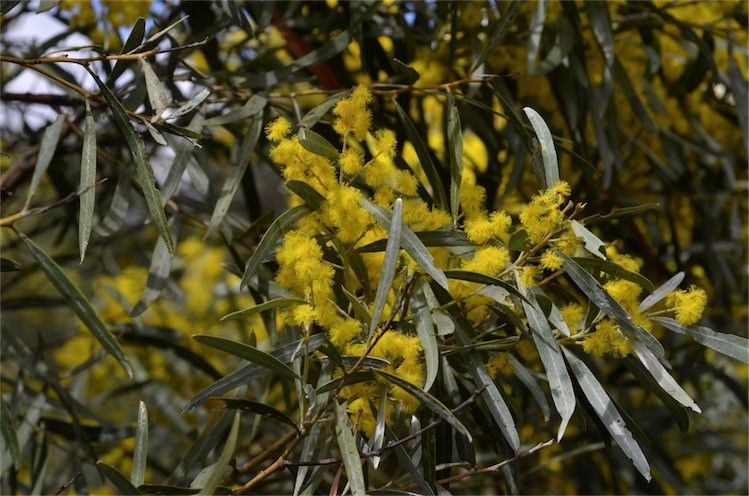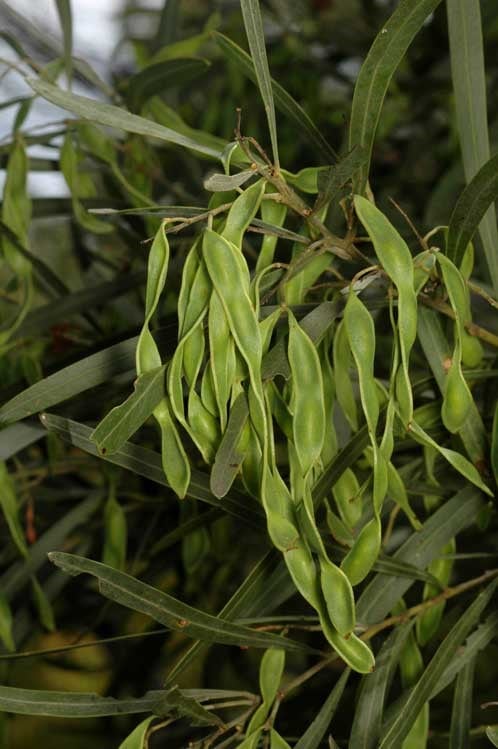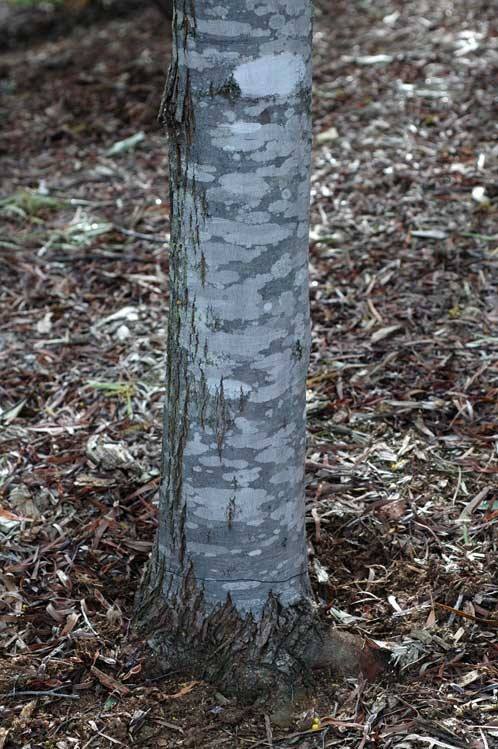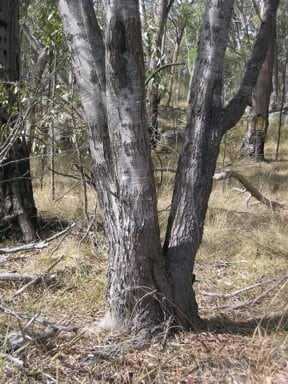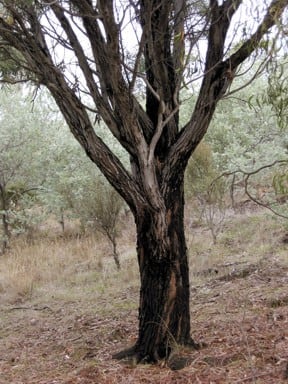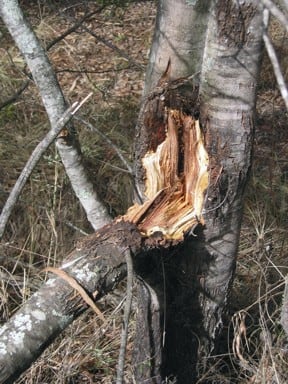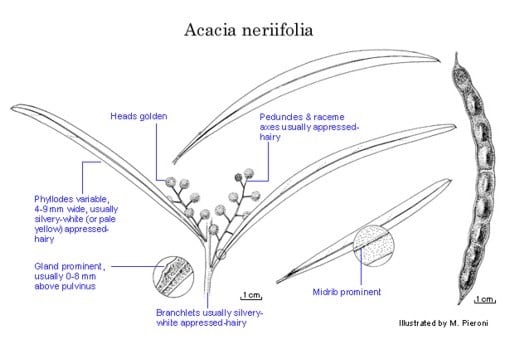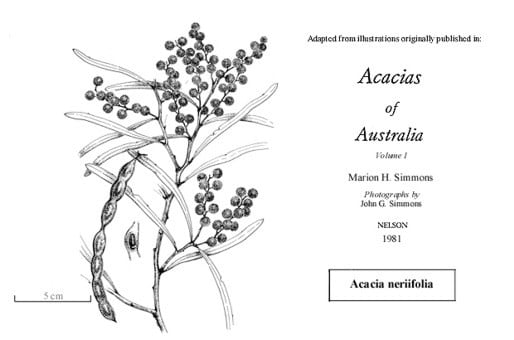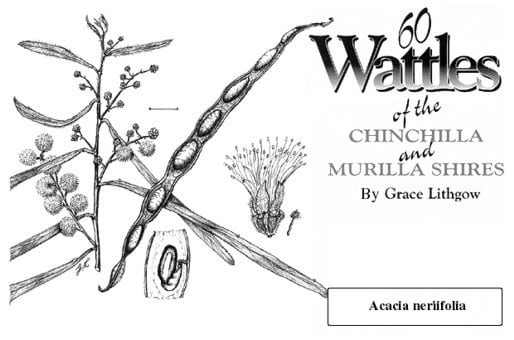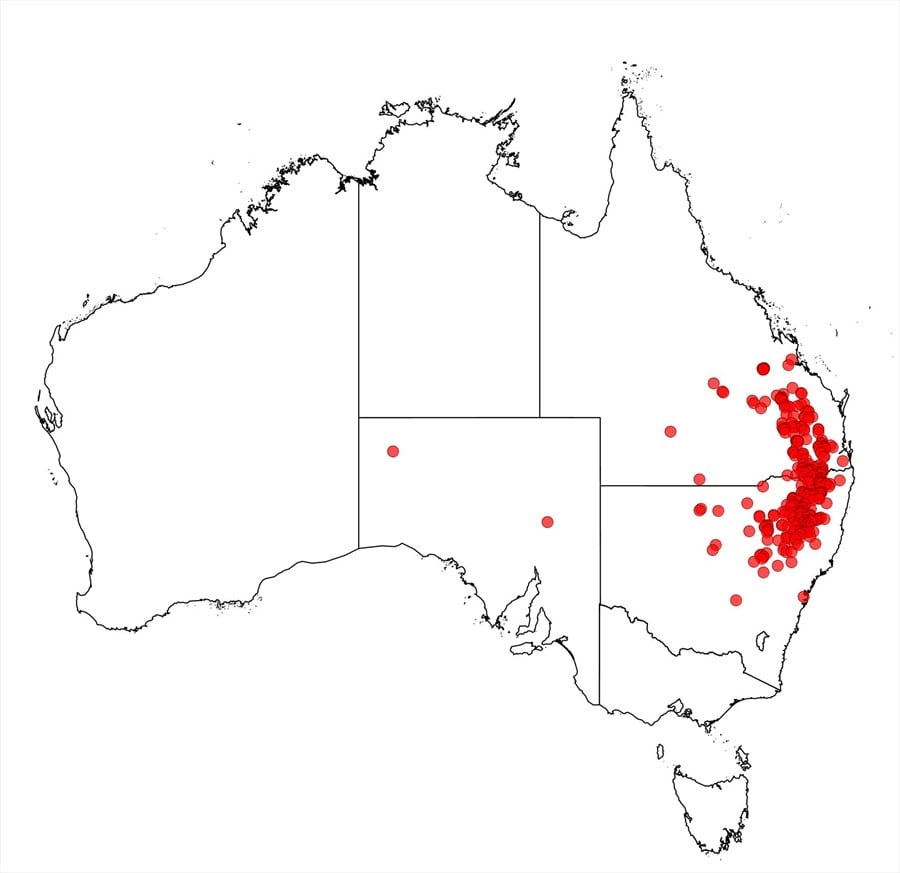Acacia neriifolia A.Cunn. ex Benth.
WATTLE
Acacias of Australia
Common Name
Oleander (-leaved) Wattle, Bastard Yarran, Silver Wattle, Black Wattle
Family
Fabaceae
Distribution
Occurs mainly on the western slopes and tablelands of the Great Divide in Qld (S of Emerald) and N.S.W. (N of Dubbo). G.Bentham, Fl. Austral. 2: 363 (1864) tentatively referred some S.A. specimens to this species; however, A. neriifolia is not known to occur in that State.
Description
Erect shrub or tree to 9 m high; juvenile bipinnate foliage sometimes persistent. Branchlets appressed-puberulous with silvery white hairs (commonly yellow on young shoots), sometimes ±glabrous. Phyllodes narrowly elliptic to almost linear, straight or recurved, usually 6–15 cm long and 4–9 mm wide, thin, with indumentum as on branchlets; midrib prominent; lateral nerves obscure; glands ±pustular, 1–3, with lowermost usually 0–8 mm above pulvinus. Inflorescences racemose; raceme axes normally 3–6 cm long, slender, appressed-puberulous with white or pale yellow hairs, sometimes (especially in fruit) ±glabrous; heads showy, globular, 20–40-flowered, vivid golden; peduncles 3–6 mm long, with indumentum as on raceme axes. Flowers 5-merous; sepals united; ovary hairy. Pods to 15 cm long, 5–10 mm wide, thinly coriaceous, glabrous. Seeds longitudinal, oblong-elliptic or obovate, 5.5– 6 mm long, ±dull, black; aril clavate.
Habitat
Often on rocky hillsides and ridgetops of granite or sandstone.
Specimens
Qld: 8 km NW of Toowoomba, L.Pedley 4135 (BRI); 4.6 km SE Kogan, J.H.Ross 3084 (BRI, PERTH). N.S.W.: Bloomley, 19 Aug. 1950, L.A.S.Johnston & E.F.Constable s.n. (NSW, PERTH); Moonbi Lookout, 12.9 km (by road) SSW of Bendemeer, D.J.McGillivray 2372 (NSW, PERTH).
Notes
Usually distinguished from A. pustula by presence of an indumentum and less prominent lowermost gland closer to the pulvinus. L.Pedley, Austrobaileya 2: 353 (1987) treated A. pustula as a subspecies of Racosperma neriifolium. A putative hybrid between A. adunca and A. neriifolia occurs in the Girraween NP in southeast Qld (e.g. M.E.Ballingall 2419, BRI).
Information on the biological and ecological features, and the utilisation potential, of this species is given in B.R.Maslin and M.W.McDonald, pp. 60–67, AcaciaSearch: Evaluation of Acacia as a woody crop option for southern Australia, pp. 148–152, RIRDC Publication No. 03/017 (2004).
A variable species in need of critical revision. Typical representatives of A. neriifolia are normally recognised by their thinly coriaceous, commonly shallowly recurved phyllodes 4–9 mm wide, to c. 12 cm long and with a dense indumentum of short, straight, silvery white hairs covering the entire lamina or occurring in patches. They also have a rather prominent gland situated 0–8 mm above the pulvinus. However, in Qld especially, there is much variation: see L.Pedley, Austrobaileya 1: 290 (1980), for discussion. Specimens from the Toowoomba–Crows Nest area often have phyllodes to 12 mm wide with the gland to 2 cm above the pulvinus; the name A. penninervis var. angustata is likely to be referable to this entity (L.Pedley, pers. comm.). Like some other specimens from elsewhere in Qld the indumentum on these plants may be sparse (sometimes completely absent from branchlets, phyllodes, raceme axes or peduncles, but not all organs simultaneously). Plants from the Granite Belt (around Stanthorpe) and Inglewood are rather large trees with coriaceous phyllodes to 21 cm long; this variant grades into ‘typical’ A. neriifolia. A specimen from near Kingaroy (i.e. N.Michael 3019, BRI) shares characters of both the Toowoomba–Crows Nest variant and A. pustula. Typical A. pustula occurs near Kingaroy but ‘typical’ A. neriifolia does appear to grow in the Toowoomba–Kingaroy area. A few N.S.W. specimens of ‘typical’ A. neriifolia have shorter than normal phyllodes (4–6 cm long, e.g. Warialda, E.Cheel, NSW167332, PERTH). Also, a specimen with atypically narrow phyllodes (c. 3 mm wide) collected by E.N.McKie (NSW167303) from E.R.Green’s property ‘Baldersleigh’, N.S.W., is similar to the closely related A. ingramii except that the indumentum occurs in patches over the entire lamina, not confined to the midrib.
FOA Reference
Data derived from Flora of Australia Volumes 11A (2001), 11B (2001) and 12 (1998), products of ABRS, ©Commonwealth of Australia
Author
Minor edits by B.R.Maslin
B.R.Maslin
This identification key and fact sheets are available as a mobile application:
URL: https://apps.lucidcentral.org/wattle/
© Copyright 2018. All rights reserved.

